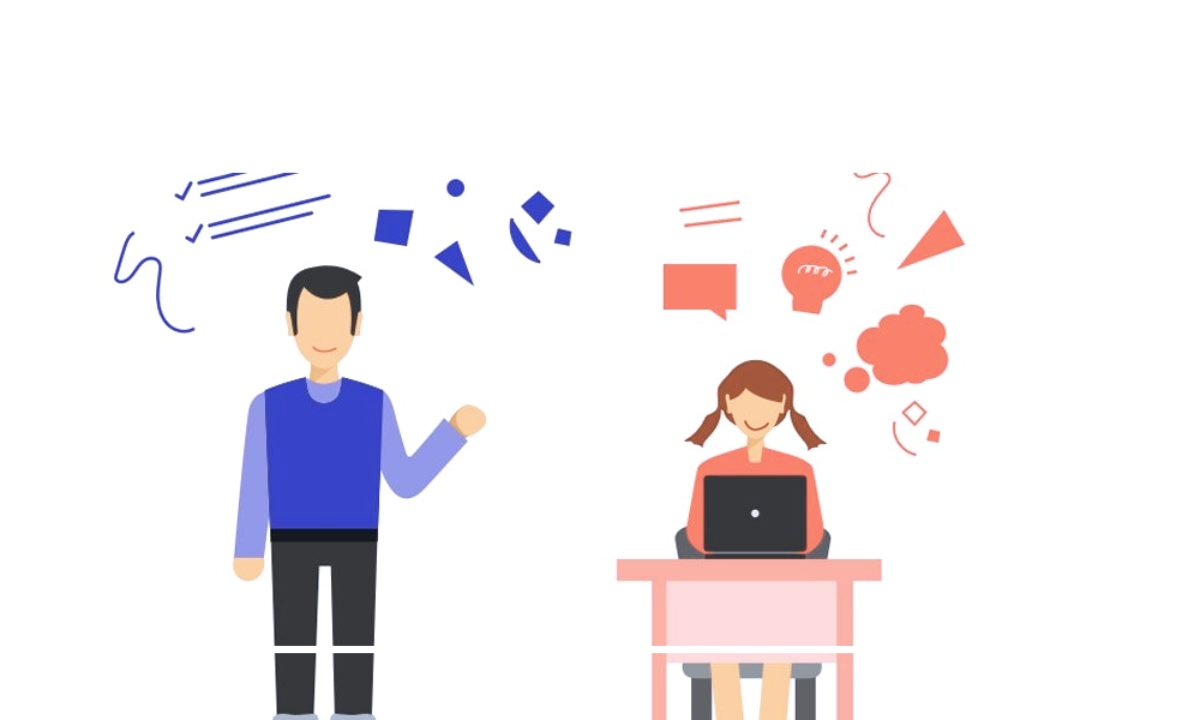Do you want to get to know each student individually when you start a new online class? Is it possible for you to think of your students as more than just a collection of unidentified names?
As a result, the term “non-traditional students” has been used to describe online students because it represents a group of students with distinct requirements from traditional college students.
Students with learning disabilities, physical disabilities, mental impairments, and other types of physical and mental challenges can participate in an online class. There is an old proverb that says you shouldn’t judge a book by its cover.

Even the terms that are used to describe learning in an environment that is enabled by technology are not very encouraging. For instance, the terms “online learning” and “distance learning” both sound mechanical. However, the relationship between the instructor and the student is at the heart of teaching in any setting.
Helping Online Students Find Their Identity
At first, an online teacher might think of their students as a single type because, when they are all represented by a printed name or number, they all look the same.
Students and teachers can now personalize classroom posts by uploading a photo to their profiles on some learning management system platforms. From the perspective of the students, there are still some who are unwilling to share any personal information, others who share too many details, and still others who wish to remain anonymous.
Every name in the classroom represents a person who wants to achieve a goal but may be unable to effectively express themselves, particularly if they have identity issues. Their internalized self-beliefs, which have been maintained over time and do not change easily or quickly, are what lead to the formation of an identity.

When students participate in class, those identity-related issues and challenges, including a negative self-image, persist. Through encouraging interactions, feedback, and communication, a teacher can assist students in discovering their true selves.
How to Overcome Anonymity
Students cannot be made to interact with their teachers beyond what is expected of them, like participating in the discussion board. However, it might be possible to get their cooperation if a strong working relationship is established.
It may take additional effort on the part of the instructor to change a student’s mindset when their reluctance is caused by their perceptions or previous negative experiences. Students can be coaxed out of their anonymity or they can continue to hide away.
You can get to know your students and help them develop their online persona by taking a few simple steps. You can, for instance, post their introduction using a variety of options, such as a recorded voice or a visual introduction. While you cannot predict how students will react to you as an instructor, you can make an effort to collaborate with them and get to know them.

Why Online Relationships
Are Important The primary reason why relationships are important is that you must collaborate with students to assist them in achieving their goals. Positive relationships with students humanize the learning experience and help keep the online environment from becoming robotic. Students see you as “real,” and you in turn see them as “real” to them. The word “relate” is at the heart of the word “relationship,” which cannot be forced, but you can cultivate.
Instead of relying solely on pre-written comments, for instance, you can tailor the feedback that students receive. Even if you never meet your students, you can still collaborate with them and offer to help. Keep a close eye on how you communicate with them and do your best to always be of assistance. This serves as a reminder that teaching involves much more than classroom management because students in every class rely on you.

Develop Meaningful Relationships
Asking students to post an introduction at the start of the class is a great way to break the ice and allow you to direct them toward the content you want them to share. Despite the fact that fun facts are entertaining, think about the value of what you ask them to post. The objective is to begin comprehending their developmental requirements by learning something about them.
As a means of establishing an open dialogue with them, in addition to the introduction, you can also provide multiple sources of availability, such as email and instant messaging. To lessen students’ frustration and anxiety, check email as frequently as possible. Weekly office hours can be held with the help of instant messaging. This helps establish an open connection with them and gives the impression that you are approachable and accessible.
Your relationship with students can be further impacted by any interaction you have with them. You will be seen as more approachable if you are able to build rapport with your students. They will discover that you possess emotional intelligence if you respond to circumstances in a proactive rather than reactive manner. As their instructor, it is your responsibility to begin and maintain meaningful relationships.

Becoming Visible to Students
When you establish a robust online presence, students can see that you are actively participating in the class. It is comparable to attending a traditional classroom to observe an instructor; Students feel more at ease the more the instructor is seen.
You can’t run an online class from afar, but by being there, you can start to close the gap. Utilizing the discussion board, take the time to engage students in conversation and follow up with them as they respond. Responding to every student at least once for each required discussion question demonstrates to them that you appreciate their efforts and contributions.
#Reference #Education #Students #online










